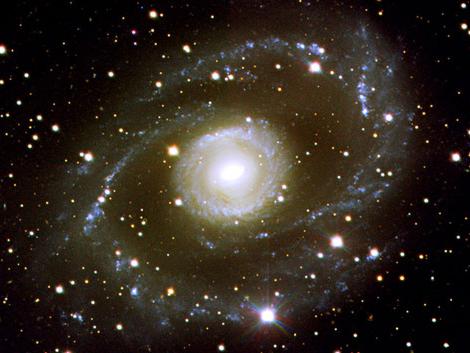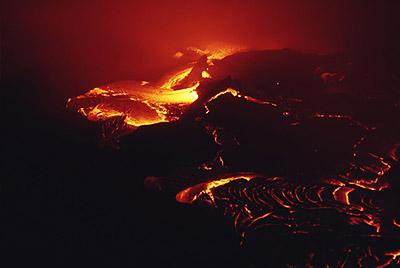The question of how the Earth was formed worried the minds of scientists for many millennia. There were many versions - from purely theological to modern, formed on the basis of data from deep space research.
But since no one was able to be present during the formation of our planet, it remains only to rely on indirect "evidence". Also, powerful telescopes provide us with great help in removing the veil from this secret.
solar system
The history of the Earth is inextricably linked with the appearance and evolution of the star around which it rotates. Therefore, you will have to start from afar. According to scientists, after the Big Bang, it took one or two billion years for the galaxies to become roughly what they are now. The solar system arose, presumably, eight billion years later.

Most scientists agree that it, like all similar space objects, arose from a cloud of dust and gas, because the matter in the Universe is distributed unevenly: somewhere it was more, and in another place - less. In the first case, this leads to the formation of nebulae from dust and gas. At some stage, perhaps through external action, such a cloud contracted and began to rotate. The reason for what happened probably lies in the supernova explosion somewhere in the vicinity of our future cradle. However, if all star systems are formed in approximately the same way, then this hypothesis looks dubious. Most likely, having reached a certain mass, the cloud began to attract more particles to itself and contract, and the rotational moment acquired due to the uneven distribution of matter in space. Over time, this spinning clot became more and more dense in the middle. So, under the influence of tremendous pressure and rising temperatures, our Sun arose.
Hypotheses of different years
As mentioned above, people have always wondered how planet Earth was formed. The first scientific justifications appeared only in the seventeenth century AD. At that time, many discoveries were made, including physical laws. According to one of these hypotheses, the Earth was formed as a result of the collision of a comet with the Sun as residual material from the explosion. On the other - our system arose from a cold cloud of cosmic dust.
Particles of the latter collided with each other and connected until the sun and planets formed. But French scientists suggested that the cloud was red-hot. As it cools, it rotates and contracts, forming rings. From the latter, planets formed. And in the center appeared the Sun. The Englishman James Jeans suggested that once another star flew past our star. She pulled out with her attraction the substance from the Sun, from which the planets subsequently formed.
How the earth was formed
According to modern scientists, the solar system arose from cold particles of dust and gas. The substance was compressed and split into several parts. From the largest piece, the Sun was formed. This piece spun and warmed up. He became like a disc. Of the dense particles on the periphery of this gas-dust cloud, planets formed, including our Earth. Meanwhile, in the center of a nascent star, thermonuclear reactions started under the influence of high temperatures and huge pressure .
There is a hypothesis that arose during the search for exoplanets (similar to the Earth) that the more heavy elements there are in a star, the less likely it is that life will nucleate near it. This is due to the fact that their large content leads to the appearance of gas giants around the star - objects like Jupiter. And such giants inevitably move towards the stars and push small planets out of their orbits.
Date of Birth
Earth formed about four and a half billion years ago. The pieces revolving around the hot disc became harder. It is assumed that initially their particles were attracted due to electric forces. And at some stage, when the mass of this “coma” reached a certain level, he began to attract everything in the district with the help of gravity.
As in the case of the Sun, the clot began to shrink and burn. The substance has completely melted. Over time, a heavier center formed, consisting mainly of metals. When the Earth formed, it began to cool slowly, and a crust formed from lighter substances.
Clash
And then the Moon appeared, but not in the way the Earth was formed, again, according to scientists and minerals found on our satellite. The earth, having already cooled down, collided with a slightly smaller other planet. As a result, both objects completely melted and turned into one. And the substance ejected by the explosion began to revolve around the Earth. From it the Moon turned out. They say that the minerals found on the satellite differ from the earth in their structure: as if the substance was melted and froze again. But the same thing happened with our planet. And why didn’t this terrible clash lead to the complete destruction of two objects with the formation of small fragments? There are many mysteries.
Way to life
Then the Earth began to cool again. Again a metal core formed, and then a thin surface layer. And between them is a relatively mobile substance - the mantle. Thanks to strong volcanic activity, the atmosphere of the planet was formed.

Initially, of course, it was absolutely unsuitable for human breathing. And life would not have been possible without the appearance of liquid water. It is assumed that the last on our planet brought billions of meteorites from the outskirts of the solar system. Apparently, some time after the Earth was formed, a powerful bombing occurred, the cause of which could be the gravitational impact of Jupiter. Water was enclosed inside minerals, and volcanoes turned it into steam, and it fell to the surface of the Earth, forming oceans. Then oxygen appeared. According to many scientists, this happened due to the vital activity of ancient organisms that could appear in those harsh conditions. But this is a completely different story. And mankind every year is getting closer and closer to receiving an answer to the question of how planet Earth was formed.